Abandoned History: The 2014 VIA VTRUX Pickup, a Forgotten Silverado

A brief moment in EV history passed us by about a decade ago, when the little-known VIA Motors introduced their lineup of VTRUX hybrid-electric vehicles. Your author managed to hear absolutely nothing about this brand or its vehicles until a post on Twit-X a couple of weeks ago. This sort of topic is the very reason Abandoned History exists. Let’s learn about the world of VTRUX.
The story begins with a company in Utah called Raser Technologies. In 2009 Raser displayed a Hummer H3 that claimed to return up to 100 miles* on a gallon of fuel (*in local daily driving) when it was outfitted with the company’s range-extender plug-in electric powertrain. Raser went looking for investors and executives, and someone to mass produce their powertrains.
Enter newly retired GM Vice Chairman Bob Lutz. Lutz brought with him other investors, as well as executives and engineers from GM. In short order, VIA Motors was established as a separate entity from Raser Technologies in 2010. Lutz joined in 2011, promptly after he retired from GM. The newly established company planned to introduce a whole line of PHEV vehicles, and their industry connection for completed passenger vehicles to convert (Lutz) was already in place.
Lutz was a staunch supporter of GM’s plug-in hybrid of the time, the Cruze-based Volt. The same basic principle was used by the VIA powertrain, and would electrify current General Motors vehicles. VIA saw an opportunity to capitalize on a new electrified vehicle market, while simultaneously taking advantage of proven Chevrolet underpinnings.
To that end, the VTRUX line was announced circa 2011. Each vehicle would use the VIA plug-in powertrain which turned the existing gas engine into a range extender. Different to the Volt’s operation, all VTRUX models were a series hybrid: There was no mechanical connection between the gas engine and the wheels. That’s different to today’s PHEV models, where the gasoline and electric engines work together to power the vehicle as needed, while the gasoline engine also charges the batteries.
The V6 or V8 engine operated only as a generator to supply electricity to the electric drive unit once batteries were empty. The traditional transmission in each vehicle was removed, and the space used for batteries. No matter whether there was a large V6 or V8 at the front, power was provided solely by the 402-horse electric motor which managed a respectable 306 lb-ft of torque.
VIA said its vehicles would accelerate to 60 miles per hour in a generally unimpressive 9.7 seconds, and on to a top speed of only 85. VTRUX trucks (Silverados) were claimed to manage 25 miles per gallon combined. The VTRUX van (Express) was said to meet 30 miles per gallon. Both these figures pertained to the times when the battery was depleted and the engine kicked on to restore power. In theory the vehicles would be charged often to minimize the gasoline used by the engine.
And the batteries would definitely need charged often, as the VTRUX line was claimed to have around a 35-mile range on battery power. When combined with the greater MPG achieved running the gasoline engine to support the electric motor, VTRUX models achieved a total mileage range similar to the standard gasoline versions.
An additional benefit of the electrified VTRUX models were their electrical outlets. The trucks could power tools on a job site with standard 120- and 240-volt outlets. Said power was drawn from the 24 kWh battery. It was estimated that charging up the batteries would take around four hours.
Ditching a transmission and partial operation on electric power alone were the selling points for the VTRUX line. VIA was focused on fleet sales and a low cost of ownership. The math worked out (per VIA) that after eight years of use, fleet customers would save roughly a third on ownership costs. Things like fuel and maintenance costs were much less with the VTRUX setup.
For the conversion from Chevrolet to VTRUX branding, VIA took off the exterior Chevrolet logos and applied their stylized VIA and VTRUX badging. On test models there were also some very large “ELECTRIFIED” wrap graphics along the side. VTRUX often wore VIA center caps on their various wheel designs.
Interior changes were very limited, as VIA did not develop their own airbag cover or replace other interior badging. The gauge cluster was modified as VIA removed the rev counter and replaced it with a power indicator to show the vehicle’s current mode along with battery charge, temp, and kW indicators (in the wrong font). The rest of the interior was standard Chevrolet.
The first model to go on sale in late 2013 was the VTRUX van, an Express 2500 equipped with the 4.8-liter V8. In 2014 the truck was launched on the new Silverado 2500 platform which utilized a 4.3-liter V6. VIA had plans for a third VTRUX model too, the so-called “Presidential SUV.”
Pictured in marketing materials, it was planned to use the Vortec 5.3-liter V8 and the Suburban 2500 body. But GM dropped the Suburban 2500 line after 2014, so VTRUX offerings were limited to two models. The company was more focused on the Silverado variant, and offered it in two- and four-wheel drive, and single and extended cab variants. The first to go on sale was the four-wheel drive crew cab.
Given the value proposition, saving ⅓ on maintenance over eight full years, one might have expected the purchase cost to be a third more than a regular 2500 truck or van. But no, VIA needed to charge twice as much as a conventional vehicle to turn a profit. In 2014, that meant a $38,050 ($49,946 adj.) WT 4WD Crew Cab trim was $76,100 ($99,893 adj.). A fleet manager attempting to explain why vehicle budgeting for the upcoming year suddenly doubled must have made for a difficult meeting.
To that end, the VTRUX did not prove very popular. After a short media blitz in 2013 showing prototypes on old generation GM trucks and some light coverage in 2014, it seems VIA discontinued their PHEV VTRUX line in short order (2015). While they focused primarily on 2500 vans and trucks in WT specification, there were other examples specially ordered, like the Silverado 1500 Z71 shown.
VIA changed tack immediately after their PHEV failure, and began work on an all-electric VTRUX line with a proprietary skateboard architecture. Presently, they do not acknowledge their first generation of VTRUX on their website, which reads as though the current EV venture is their starting point. If you’re interested in what VIA is up to today we can certainly talk about that in another installment, but that’s up to you. Until then!
[Images: Raser Technologies, VIA Motors, Seller]
Become a TTAC insider. Get the latest news, features, TTAC takes, and everything else that gets to the truth about cars first by subscribing to our newsletter.

Interested in lots of cars and their various historical contexts. Started writing articles for TTAC in late 2016, when my first posts were QOTDs. From there I started a few new series like Rare Rides, Buy/Drive/Burn, Abandoned History, and most recently Rare Rides Icons. Operating from a home base in Cincinnati, Ohio, a relative auto journalist dead zone. Many of my articles are prompted by something I'll see on social media that sparks my interest and causes me to research. Finding articles and information from the early days of the internet and beyond that covers the little details lost to time: trim packages, color and wheel choices, interior fabrics. Beyond those, I'm fascinated by automotive industry experiments, both failures and successes. Lately I've taken an interest in AI, and generating "what if" type images for car models long dead. Reincarnating a modern Toyota Paseo, Lincoln Mark IX, or Isuzu Trooper through a text prompt is fun. Fun to post them on Twitter too, and watch people overreact. To that end, the social media I use most is Twitter, @CoreyLewis86. I also contribute pieces for Forbes Wheels and Forbes Home.
More by Corey Lewis
Latest Car Reviews
Read moreLatest Product Reviews
Read moreRecent Comments
- MaintenanceCosts If you're buying your car to drive on some of the longer tracks, or if you're going drag racing, with street driving on the side, then maybe a very high-power engine option like this is worthwhile for you. If you're buying your car to drive on the street, and don't drive on a track, it's hard to see the benefit. The envelope of a Z06 goes way beyond anything you need on the street and the additional capability of a ZR1 is not useful at all.
- MaintenanceCosts Thanks to a combination of aging product and its CEO's erratic and often embarrassing conduct, Tesla's brand has gone from "can do no wrong" to "the embarrassing thing you have to put up with to have an affordable EV." People are accordingly less forgiving.
- Jalop1991 Great question. Why not make a track-only car. I'm sure some would say, they want the ability to drive the car to the track. But this brings up another thought: I keep hearing, right here even, about how "EVs are so much better, they're silent on the road, and they have INSTANT POWER and huge acceleration". Do we need EVs to behave that way any more than we need 1000 bhp road cars? Do we need to put go pedal behavior like that under the feet of new drivers? Of your mother? Of 35 year old Tiffany as she stares at her iPhone in traffic?
- Kars they won't be bringing Junior to America - they won't be around long enough
- Master Baiter Not if you are powering a container ship.



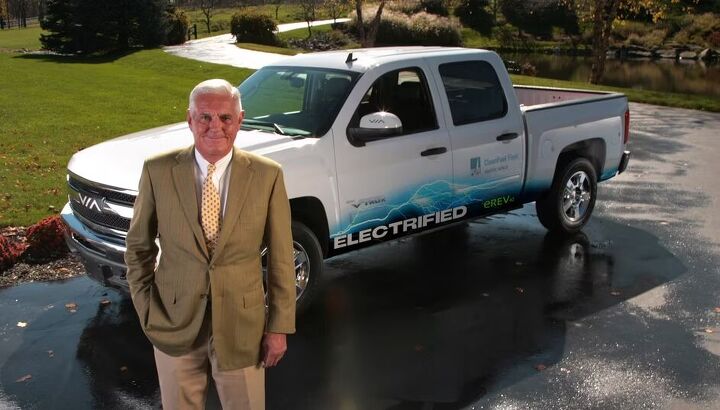






























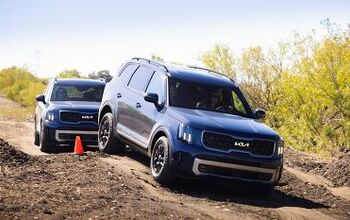


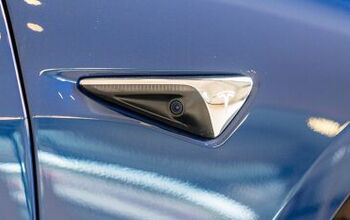

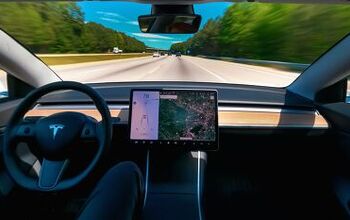

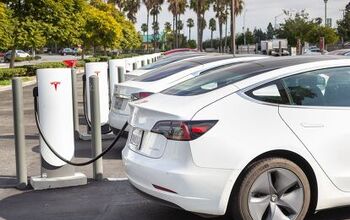




Comments
Join the conversation
With Lutz the Putz involved, what could go wrong?
One is for sale on an ebay car donation site.
https://www.ebay.com/itm/305579991767?itmmeta=01HYHVJ49MCC6HEWQY5AX9MX85&hash=item4725fca2d7:g:k9cAAOSw5V5mThFw